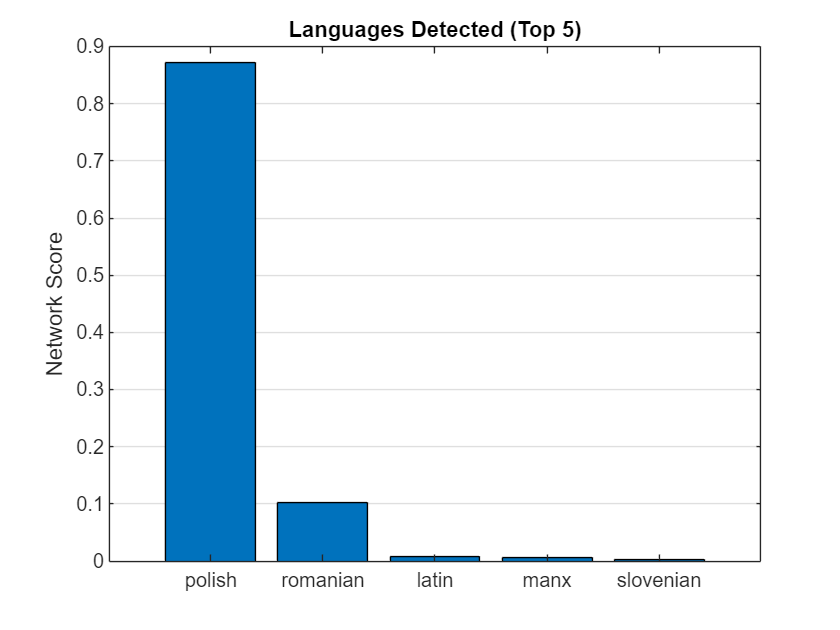identifyLanguage
Syntax
Description
identifyLanguage(___) with no output arguments plots a
bar graph of the top 5 highest-scoring languages.
Examples
Input Arguments
Output Arguments
Algorithms
The identifyLanguage function uses an ECAPA-TDNN[1] model to identify
languages. This neural network uses pretrained weights from the
lang-id-voxlingua107-ecapa model provided by SpeechBrain[2].
References
[1] Desplanques, Brecht, Jenthe Thienpondt, and Kris Demuynck. “ECAPA-TDNN: Emphasized Channel Attention, Propagation and Aggregation in TDNN Based Speaker Verification.” In Interspeech 2020, 3830–34. ISCA, 2020. https://doi.org/10.21437/Interspeech.2020-2650.
[2] Ravanelli, Mirco, et al. SpeechBrain: A General-Purpose Speech Toolkit. arXiv, 8 June 2021. arXiv.org, http://arxiv.org/abs/2106.04624
Extended Capabilities
Version History
Introduced in R2024b
